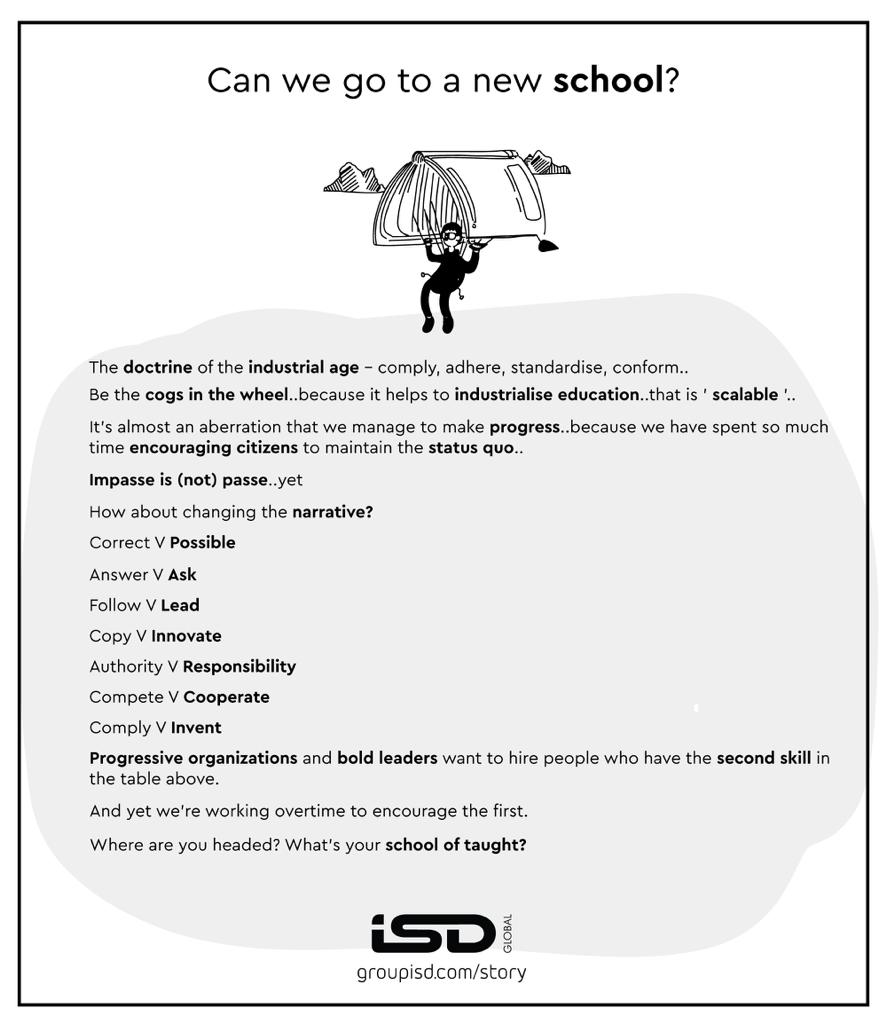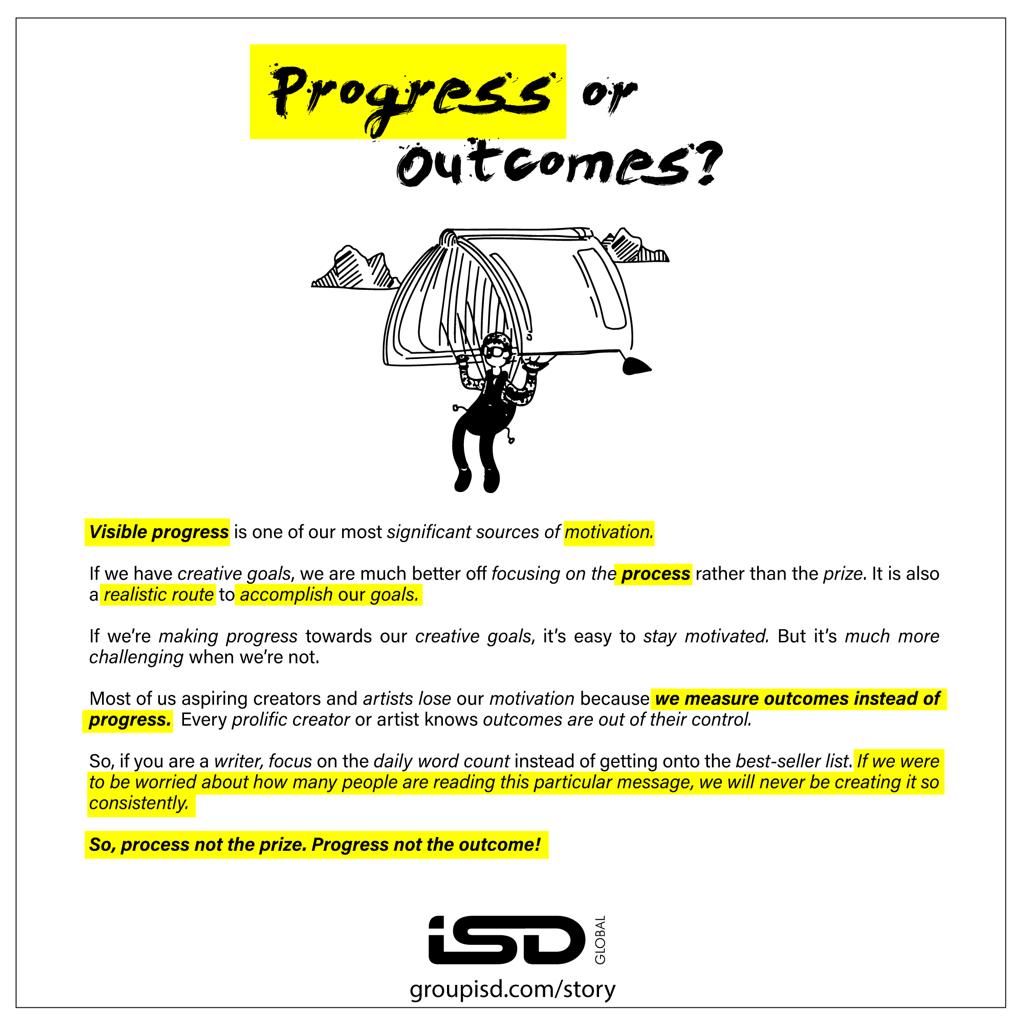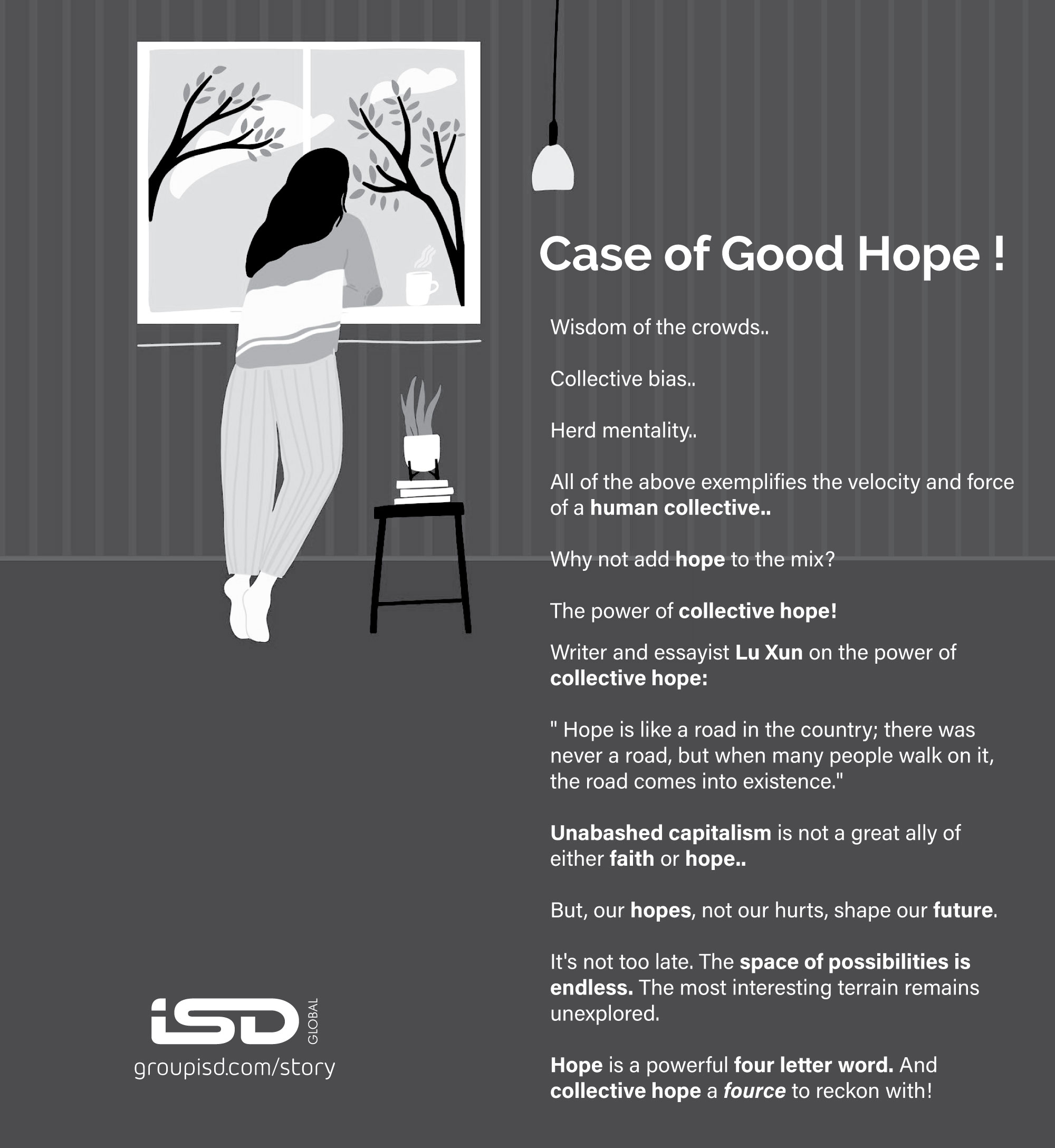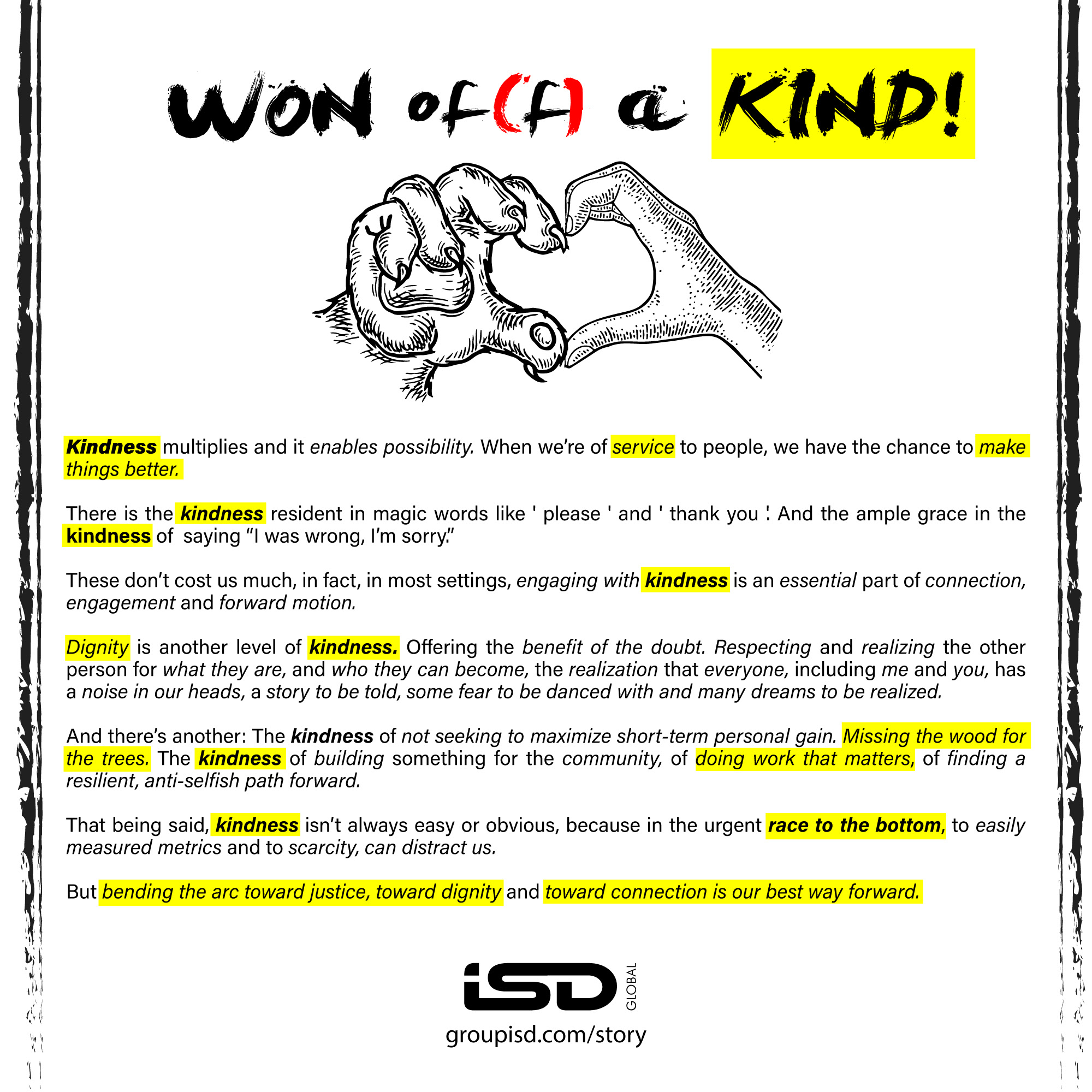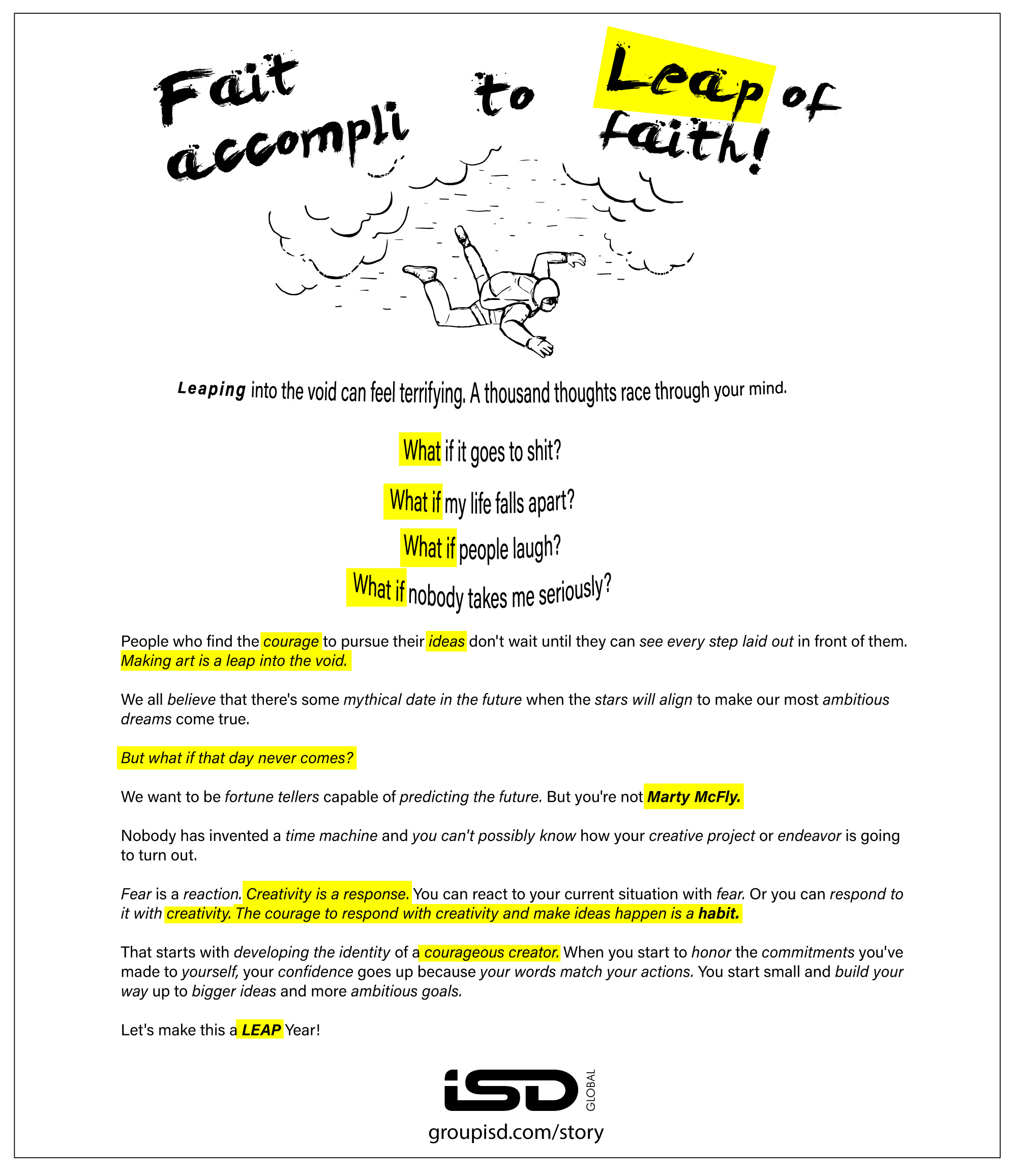The past has no power to stop you from being present now. Often we allow ourselves to be upset by small things we should despise and forget. Preferring to hang onto its coat tails. And happy to play victim.
Grievance as the crutch to making things better is a disaster. Because if that is the preferred status quo, exploring possibilities and therefore resolution and progress becomes a non starter.
As Booker Washington put it ” Let our opportunities overshadow our grievances “.
Holding onto a distant past to justify a present grievance is baseless. Possibility rides on the bedrock of uncertainty. Because nothing in life is ever sure.
The assertion here, however, is that there really is no creativity without uncertainty. Put another way: dubito ergo creo. This is Latin for, I doubt therefore I create.
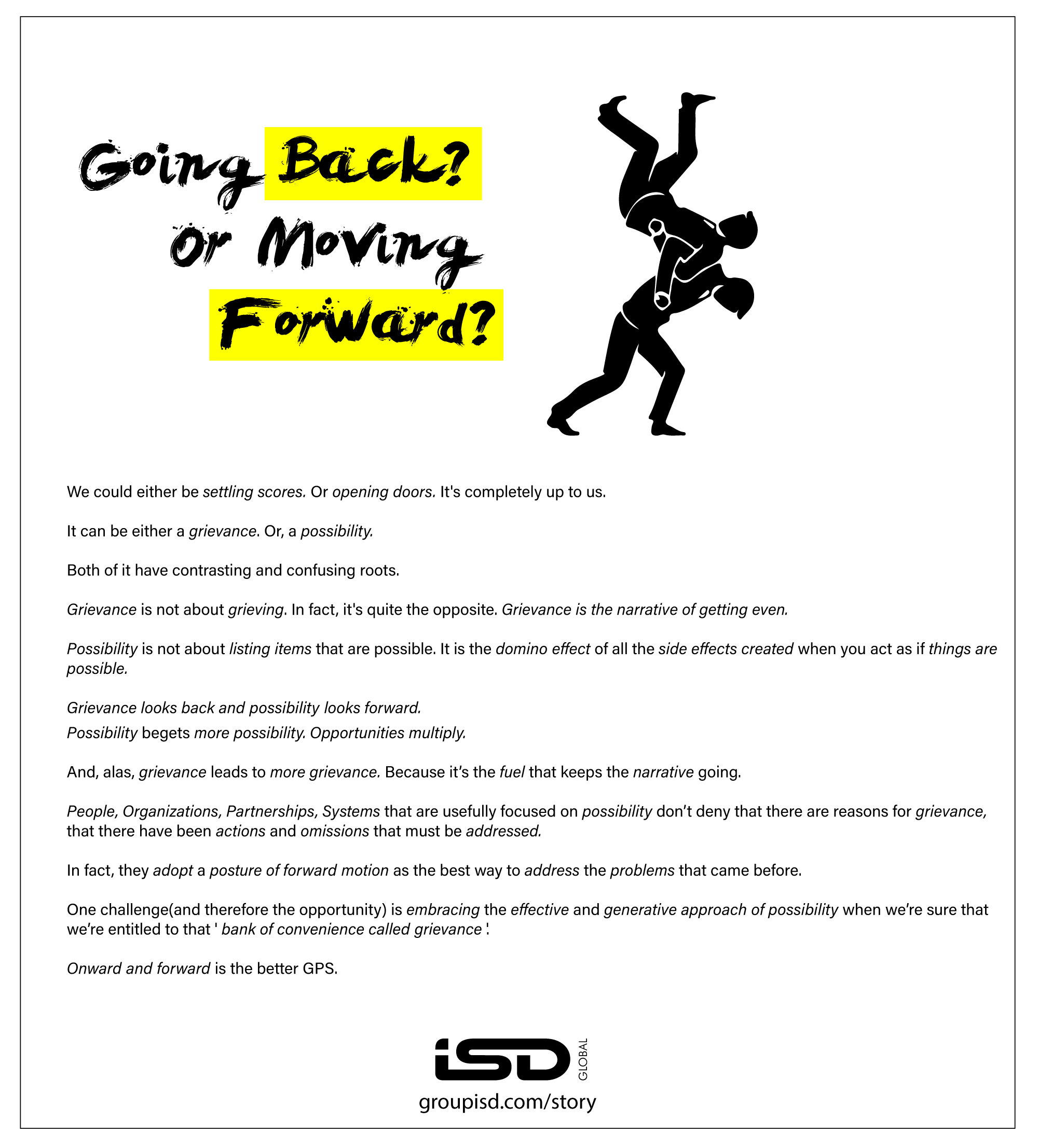
The outside world provokes, persists and insists that we change the story we tell ourselves. Our attitude doesn’t have to be driven by the outside world, but sometimes they overlap.
Specifically, when we experience uncertainty – no matter how uncomfortable and unsettling and destabilizing it can feel – the good news is that it opens vistas of possibility for new thought and action.
Organizations are created, powered, and led by people. To lead organizations well, we train people in disciplines such as marketing, finance, and leadership. But uncertainty presents a special challenge since few of us have received training in how to deal with it. As a result, although we may call for innovation, transformation, and change, most people back down at even the hint of risk, falling into a series of behavioral traps that limit organizations’ ability to grow and adapt. The challenge is that all growth, change, and transformation inevitably come paired with uncertainty. We have to go through the uncertainty to get to the possibility.
“In detachment lies the wisdom of uncertainty…in the wisdom of uncertainty lies the freedom from our past, from the known, which is the prison of past conditioning. And in our willingness to step into the unknown, the field of all possibilities, we surrender ourselves to the creative mind that orchestrates the dance of the universe.” ~ Deepak Chopra.
As a possibilitarian ( its possible to create new vocabulary, you see!), may I direct you to this article from BrandKnew which talks about unlocking your inner futurist?
ENDS


